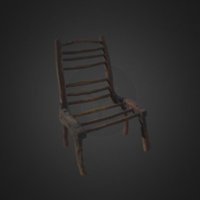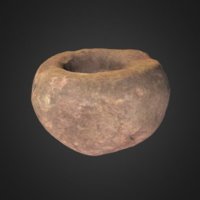Museum: Timespan
Dublin Core
Title
Museum: Timespan
Identifier
5
Collection Items
Caen Pre-Clearances Township 1813
During the eighteenth and nineteenth centuries the inhabitants of many small farming communities in the Scottish Highlands were forced to leave their homes. Under the guise of improvement landlords drove out traditional subsistence farmers and…
Sutherland Chair
A small wooden chair made by a local house carpenter from bogwood. The sides are made from two pieces of wood forming a natural right angle and the back and seat are connected by wooden spars. These chairs were deliberately designed to be close to…
Metal Can
A "Tinkler" made metal can possibly used for milk or other liquid foodstuff. Dated early 20th century.
Iron Age Kildonan
These artefacts are held at Timespan Museum & Arts Centre. Timespan is a cultural institution in Helmsdale, a village in the very northeast of the Scottish Highlands, with local, global and planetary ambitions to weaponise culture for social…
Earthenware Pot
A large pottery domestic container with a brown salt glaze commonly used for storing flour and other grains. Dated. c. late 19th century.
Roll of Rope
Fishermen used rope to haul their nets, hoist sales and drop anchors. It was a vital necessity abroad any fishing boat. Dated mid-20th century.
Net Mending Needle
A tool used for making and repairing nets. Early examples were made of wood or bone which was later replaced by plastic. Dated early-mid 20th century.
Water Jug
A large urn shaped water jug used with a basin for washing at a wash stand. Dated. Early 20th century.
Palm
A tool used to protect the hand when making or mending sails. It is made from leather and a pad of resin forms the thimble like head used to push a needle through the tough sail cloth. Dated early-mid-20th century.
Weighing Scales
General purpose scales made by Salter Housewares Ltd. Dated late 19th. Century.
Cooper's "Apprentice Piece" Flask
This flask was made by a cooper at the end of his apprenticeship and used the same woodworking skills that were required to make herring barrels. Twelve wooden staves were used to make the flask and six brass rings around the outside were used to…
Cooper's Croze
Used for making grooves about an inch and a half below the rim of a barrel to hold the lid or head. It is stamped “Peter J Jack, Wick”. Dated c. late 19th/early 20th century.
Creel Basket
A large basket worn on the back to carry fish usually made from larch or willow branches. The fishwife would sell fish to the surrounding community or barter for fresh dairy produce. Dated c. early 20th century.
Stone Bowl
Stone bowl found in a Pictish cairn at Dalcharne, in the Strath of Kildonan, in 1853. The vessel comprises an oval bowl with one broken short lug-like, perforated handle. It is made from a soft rock, similar to soapstone, and has concentric and…
Spindle Whorl
A decorated stone spindle whorl with concentric ring of punched dots and central perforation, used as a weight for a wooden drop spindle. The weight helped give the spindle momentum in the twisting, or spinning, of raw wool fibers into yarn for later…
Spindle Whorl
A spindle whorl for spinning raw wool, made from a grey schist-like rock with central perforation used as a weight for a wooden drop spindle. The weight helped give the spindle momentum in the twisting, or spinning, of raw wool fibers into yarn, for…
Stone Lamp
Stone lamp made from an oval pebble, with shallow concave oil bowl and wick holder. The wick was traditionally made from the waxy pith from reed stalks and oil was derived from animal fat. It is thought to have been found in the Strath of Kildonan.…
Stone Crucible
A small rounded sandstone bowl or crucible of unknown use and origin. Dated 500BC-500AD.

